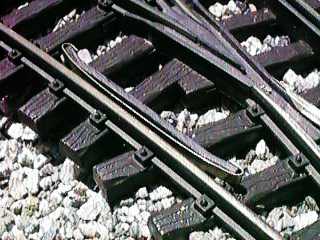The AMS passenger cars aren’t going to like a reverse curve on a 5’ radius one bit. I’ve got Aristo’s 5’ radius switches on the switching railroad that’s in my workshop. There’s too much overhang on the coaches as they go through the switches, and the couplers end up derailing the coaches. Your only solution is to eliminate the “S” curve coming out of the switch to the siding. John’s idea of using a RH #6 has merit, but you’re going to lose probably around 3’ or more off the length of the siding if you do that.
I can’t really tell from the photos; what is the radius of the curve leading into the switch that’s there now? It looks to be wider than 5’ radius, but it could be the camera angle. If it’s wider (7’ or even 10’ radius), you may want to look at one of TrainLi’s “ProLine” curved switches. I’d suggest using one of those, and moving it further back on the curve. ProLine makes them in 10/7’ and 7/5’ combinations. If you move the switch back further on the curve, even with a 5’ take-off (the same that you have now), your reverse curve can be much gentler because you should be able to work in a decent length of straight track right after the switch without creating too much distance between the mainline and the siding. The downside–those switches aren’t exactly easy on the budget.
Later,
K
